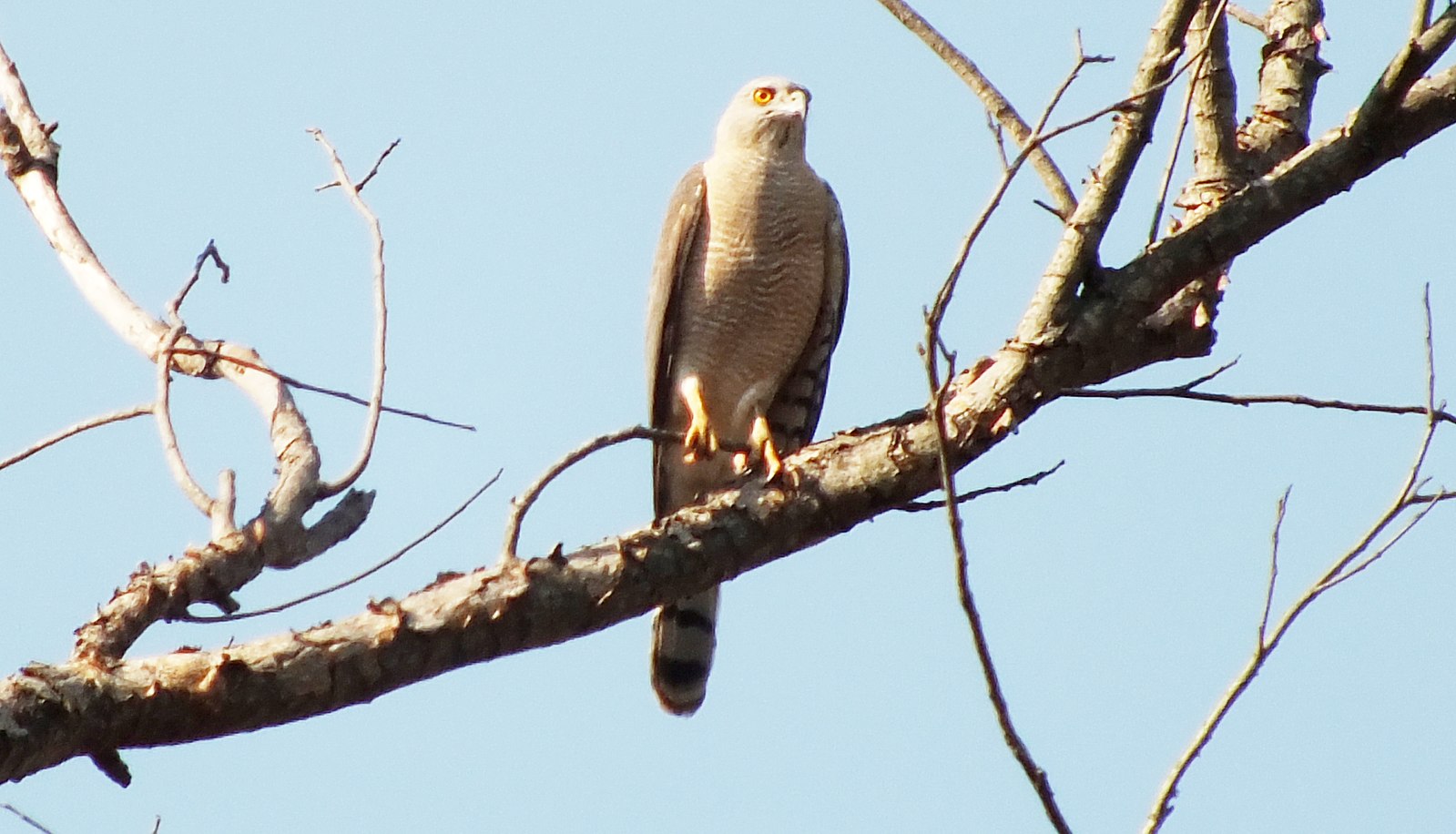Shikras are known to be opportunistic predators, and they have been observed to include squirrels in their diverse diet. While there is no specific data on the frequency or percentage of squirrels in their diet, shikras have been documented hunting and consuming these small mammals.
Shikras’ Diverse Diet
Shikras are known to have a varied diet that includes a range of prey items:
- Rodents
- Squirrels
- Bats
- Small birds and their eggs
- Small reptiles (mainly lizards, but sometimes small snakes)
- Insects
They employ different hunting strategies to catch their prey, such as:
- Taking birds near the ground after a dive from a concealed perch
- Ambushing birds and flying them down
- Snatching prey from tree trunks and foliage
- Catching prey in flight
Shikras and Squirrels
 Image source: SHIKRA by Shiv’s fotografia
Image source: SHIKRA by Shiv’s fotografia
While there is no specific data on the frequency of squirrels in the shikra’s diet, it is known that they do prey on these small mammals. Shikras are opportunistic hunters and will take advantage of any available and vulnerable prey, including squirrels.
Shikras are found in a wide range of habitats, including forests, farmland, and urban areas, where they may encounter and hunt squirrels. Their agile flight and hunting strategies make them well-equipped to target these small, fast-moving prey.
Shikra Hunting Behavior
Shikras employ a variety of hunting techniques to catch their prey, including squirrels. They are known to:
- Perch and wait for an opportunity to dive and capture prey near the ground
- Ambush birds and other small animals by swooping down from a concealed perch
- Snatch prey from tree trunks and foliage
- Catch prey in flight, demonstrating their impressive aerial skills
These hunting strategies allow shikras to target a wide range of prey, including squirrels, which may be found in the various habitats where shikras are known to reside.
Shikra Habitat and Distribution
Shikras are found in a wide range of habitats across Asia and Africa, including:
- Forests
- Farmland
- Urban areas
They are typically seen singly or in pairs and are known for their distinctive flight pattern, which includes flaps and glides. During the breeding season, shikras may be observed soaring on thermals and stooping at each other.
Shikra Breeding and Nesting
Shikras are monogamous and form pairs for life. In India, they breed during the summer months, between March and June. Their nest is a platform similar to that of crows, lined with grass. Both partners participate in building the nest, with the female typically laying a clutch of 3 to 4 eggs.
Conservation Status
According to the IUCN Red List, the total population size of the shikra is estimated to be between 500,000 and 999,999 mature individuals. Currently, the species is classified as Least Concern (LC), indicating that it is not facing any major threats at present.
However, the loss of their native habitat and illegal trading may pose serious threats to these birds in the future. It is important to monitor and protect the shikra’s population to ensure its long-term survival.
References:
– The Hindu. (2020-01-10). The Shikra is a bird that embodies brains and bravery. https://www.thehindu.com/sci-tech/energy-and-environment/the-shikra-is-a-bird-that-embodies-brains-and-bravery/article30533788.ece
– Wikipedia. Shikra. https://en.wikipedia.org/wiki/Shikra
– The Peregrine Fund. Shikra. https://peregrinefund.org/explore-raptors-species/hawks/shikra
– Animalia.bio. Shikra. https://animalia.bio/shikra?property=145
